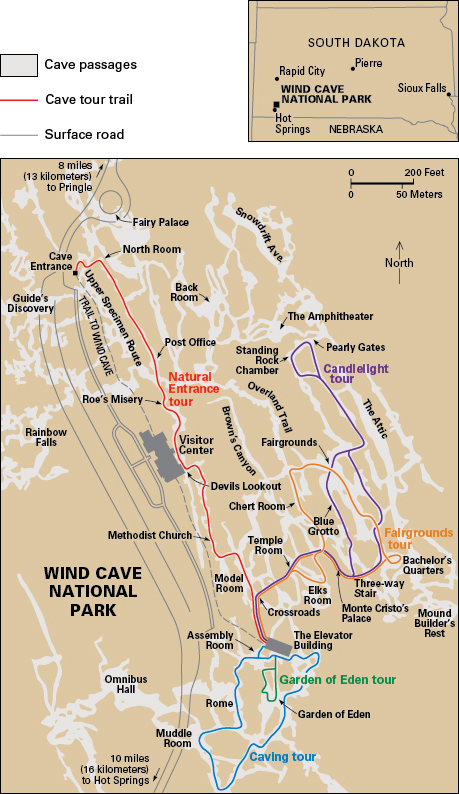Wind Cave National Park is a park in the rolling hills of southwestern South Dakota which surrounds one of the most unusual caves in the United States. Strong currents of wind that blow alternately in and out of the mouth of the cave suggested its name. In the cave, the wind is quiet, and the temperature remains a cool 53 °F (12 °C). The cave was formed as water slowly dissolved away layers of limestone.


Wind Cave has a series of strange boxwork and frostwork formations that are not found elsewhere in the United States. The boxwork formations are calcite crystal structures, which vary from bright yellow through pink and rich browns to deep blue. The frostwork is made up of many tiny white crystals along the ceilings and walls. Electric lights in the cave make the boxwork shine and the frostwork gleam.
The Sioux people regard Wind Cave as a sacred site. According to Sioux oral history, it was from this cave that buffalo first emerged and populated Sioux hunting grounds. Tom Bingham, a Black Hills pioneer, is often credited with discovering the cave in 1881. While deer hunting, he heard a whistling sound coming from a clump of brush. Bingham found an opening in the rock, about 10 inches (25 centimeters) in diameter, from which a strong draft came. This opening is a few steps from the present entrance to the cave, which was built later.
The land around Wind Cave was made a national park in 1903. The park is located about 10 miles (16 kilometers) north of Hot Springs, South Dakota. For the area of the park, see National Park System (table: National parks) . The surface area of Wind Cave National Park is a wildlife preserve for buffalo, deer, prairie dogs, pronghorn, and other animals.
